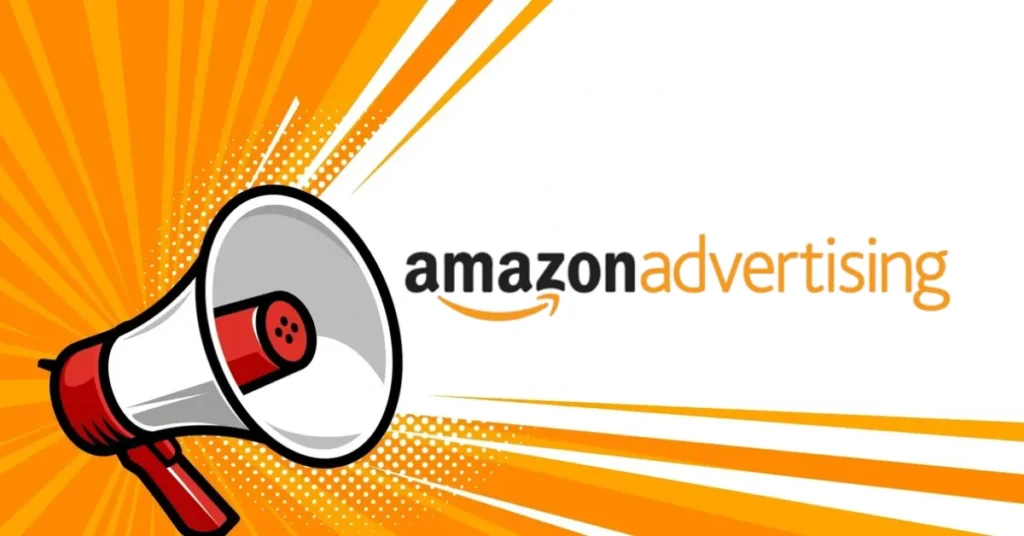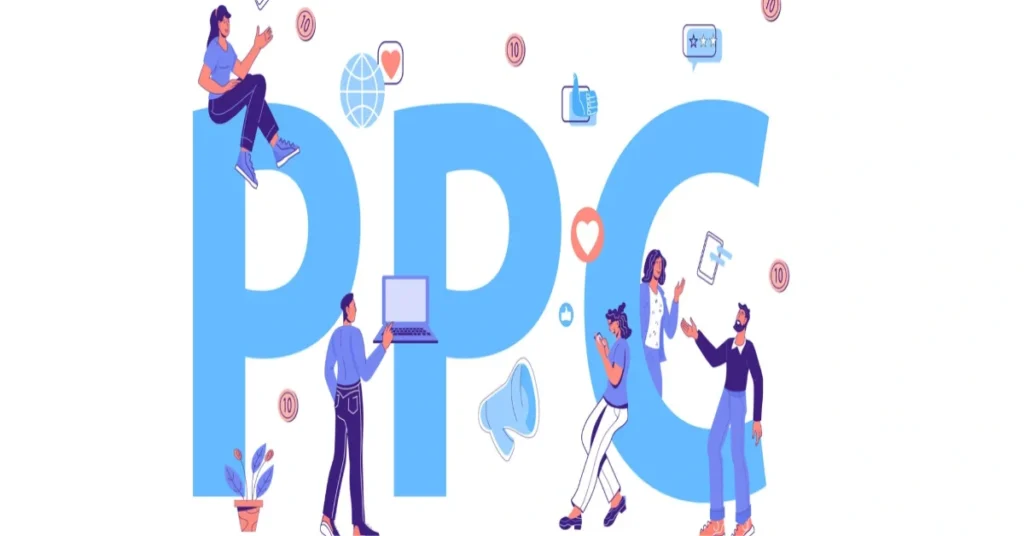Amazon advertising has become an essential tool for anyone selling products online. In 2025, it’s more than just running a few ads; it’s about building a powerful presence and reaching customers effectively. As the e-commerce world keeps changing, understanding how to use Amazon’s advertising tools is key to your success. I will explore how you can utilize these tools to enhance your sales, expand your brand, and connect with more shoppers.
The Power and Evolution of Amazon Advertising

Amazon advertising helps sellers and brands promote products and drive sales. It works on Amazon and other places across the internet. This matters a lot in 2025. Amazon is a huge player in online shopping. More competition means you need strong visibility.
Amazon’s advertising business saw strong growth in the first quarter of 2025, bringing in $13.9 billion in revenues, up 19% from the same time last year. Advertising services contributed 8.9% of the company’s total revenues in the quarter. The company said this growth came from more brands using its full range of ad services, which now reach more than 275 million ad-supported users in the United States alone.
What is Amazon Advertising?
Amazon Advertising is a set of services. These services help businesses show their products to shoppers. Imagine you have a product. Amazon Advertising helps people find it. This can be directly on Amazon or other websites. It puts your products in front of people who are ready to buy.
According to the Amazon Ads official website, Amazon Advertising offers a comprehensive suite of advertising solutions, including self-service options like Sponsored Products, Brands, and Display, alongside managed services such as Amazon DSP, to help businesses of all sizes reach customers and achieve diverse marketing goals. Leveraging a pay-per-click model for many ad types, the platform provides robust targeting capabilities, transparent reporting on metrics like ACoS, and high-visibility placements on and off Amazon, enabling advertisers to efficiently drive sales, enhance brand awareness, and optimize their campaigns based on performance data.
Key Benefits of Advertising on Amazon
Advertising on Amazon offers many benefits. You connect with high-intent shoppers. These are people actively looking to buy. Your products get more visibility. This leads to more sales. You can also build your brand. People remember your name and products. Amazon uses its vast customer data. This helps your ads reach the right people.
The Evolving Story (2025 Trends)
The advertising world on Amazon is always changing. Artificial intelligence (AI) helps optimize campaigns more and more. We see a stronger push for full-funnel strategies. This means reaching customers at every step of their buying journey. Understanding data and knowing where your sales come from is also very important.
Core Amazon Advertising Products: A Deep Dive

Amazon offers several main advertising products. Each one helps you achieve different goals.
Sponsored Products
Sponsored Products are like traditional search ads. They are for individual products you sell.
What they are:
Sponsored Products appear as keyword-targeted or product-targeted ads. They show up for single product listings (ASINs). For the launch of this audience and its benefits (2x more NTB orders for 100%+ bid increase).
How they work:
Your ads show up in Amazon search results. They also appear on product detail pages. When a shopper clicks, they go straight to your product page.
Key use cases:
Use Sponsored Products to drive sales for specific items. They are good for new listings. They also protect your brand name from competitors.
Best Practices:
Research your keywords carefully. Use negative keywords to block irrelevant searches. Manage your budget wisely. Adjust your bids to get the best results.
Sponsored Brands
Sponsored Brands help you build your overall brand. They feature your brand logo and multiple products.
What they are:
These include headline search ads. They can also be product collection ads. You might also see Store Spotlight ads.
How they work:
Sponsored Brands send shoppers to your Amazon Store. They can also go to custom landing pages. These ads show several of your products at once.
Key use cases:
Use Sponsored Brands for brand awareness. Promote your entire product line. Launch new products. Build strong customer loyalty.
Best Practices:
Create engaging ad copy and visuals. Make sure your Amazon Store is well-designed. Target keywords that represent your brand.
Sponsored Display
Sponsored Display ads show up in many places. They target shoppers based on their interests.
What they are:
These are display ads. They target products or audiences. They appear on Amazon and other websites.
How they work:
Sponsored Display helps you retarget shoppers. You can target specific product categories. You can also target competitor products. Audience targeting reaches new groups based on their Amazon behavior.
Key use cases:
Re-engage shoppers who showed interest. Connect with shoppers looking at competitor products. Find new audiences based on what they browse or buy on Amazon.
Best Practices:
Optimize your ad creatives. Segment your audiences carefully. Adjust your bids for different campaign goals.
Beyond the Basics: Advanced Amazon Advertising Strategies

Let’s look at more advanced ways to make your Amazon advertising work harder. According to Sequencecommerce statistics, this includes tools that go beyond the usual sponsored ad types. The current average CTR on Amazon stands at 0.34%… The average Amazon advertising conversion rate has reached an impressive 9.96%, significantly outperforming the standard e-commerce conversion rate of 1.33% on other platforms.” Also for 7, 14, and 30-day attribution window conversion percentages.
Mastering Amazon DSP (Demand-Side Platform)
Many sellers use Sponsored Products and Brands. But Amazon DSP offers a powerful way to reach even more people. It helps you find customers even when they are not on Amazon.
What is Amazon DSP?:
Amazon DSP is a programmatic advertising platform. It lets you buy display, video, and audio ads. These ads show up on Amazon’s sites and apps. They also appear on many other websites and apps across the internet.
Why use DSP?:
DSP helps you reach audiences away from Amazon. It offers advanced ways to target people. You can target based on interests, in-market behaviors, or even retarget those who visited your pages. It supports full-funnel campaigns. This means reaching shoppers from early awareness to final purchase.
Key Capabilities & Targeting Options:
- Amazon Audiences: Target people based on their shopping habits or demographics.
- Contextual Targeting: Show ads on websites related to your product category.
- Retargeting: Reach people who viewed your products or similar items.
- Lookalike Audiences: Find new customers who look like your existing ones.
- Geographic Targeting: Show ads only to people in specific locations.
- Device Targeting: Control which devices your ads appear on (mobile, desktop, Fire TV).
Campaign Setup & Management (Practical Guide):
Setting up DSP involves creating “Orders” and “Line Items.” These are like campaign and ad group levels. You also upload your ad visuals and videos. Understand where your ads will show up. This includes Amazon’s sites and apps, and partner websites. Good ad creatives are very important for display, video, and audio.
Measuring DSP Performance:
Look at impressions (how many times your ad showed). Check your reach (how many unique people saw it). Viewability tells you if your ads were seen. View-through attribution helps you see if someone bought after just seeing your ad, even if they did not click.
Common Considerations for DSP:
DSP is a powerful tool. It often works best for brands with larger budgets. It needs careful management. Start with clear goals. Test different targeting and creative approaches.
Advanced Bidding Strategies & Algorithms

Setting your bids is more than just choosing “dynamic bids.” Smart bidding can truly change your results.
Beyond Dynamic Bids (Up & Down, Down Only):
- Dynamic Bids – Up & Down: Amazon can increase your bid by up to 100% for clicks likely to convert. It can lower bids for less promising clicks. Use this for new campaigns when you need to gather data and get visibility.
- Dynamic Bids – Down Only: Amazon can lower your bid if it predicts the click is less likely to convert. It will never raise it. This helps control costs. It is often a safer choice for many campaigns.
Portfolio Bidding Strategies:
Think about your campaigns as a team. You can set overall goals for a group of campaigns. This helps manage bids across them. You optimize for a broader business objective, not just single campaigns.
Rule-Based Automation:
You can set up rules to change bids automatically. For example, if a keyword’s ACoS (Advertising Cost of Sale) goes above a certain level, you can have Amazon automatically lower the bid. This saves time and keeps your campaigns efficient.
Understanding Amazon’s Machine Learning in Bidding:
Amazon uses AI to predict conversion likelihood. This influences how your bids perform. The system learns over time. It tries to get you the most conversions for your money. It understands when a bid might be worth more for a sale.
Strategies for Highly Competitive Categories:
If your market is tough, you might need specific approaches. This includes:
- Aggressive bidding: For top-performing keywords.
- Defensive bidding: To hold your ground against competitors.
- Focus on long-tail keywords: These are specific, longer search phrases. They often have less competition.
Bid Modifiers:
Amazon offers modifiers for placements. For example, “Top of Search” bids. You can pay more to show your ad at the very top of search results. Use these strategically. They can bring high-quality clicks.
Demystifying Amazon Attribution Models
Knowing where your sales come from is crucial. Amazon’s attribution helps you see the whole customer journey.
Introduction to Marketing Attribution:
Attribution helps you understand which marketing efforts led to a sale. It is about giving credit where credit is due. This is vital for knowing your return on ad spend (ROAS).
Amazon’s Default (14-day Last-Touch):
Historically, Amazon used a “last-touch” model. The last ad click or view before a purchase got all the credit. This is simple, but it misses much of the story. It does not show you how early ads influenced the decision.
Exploring Multi-Touch Attribution (MTA) in AMC:
Amazon is moving towards Multi-Touch Attribution (MTA) in 2025. This means multiple ads can share credit for a purchase. This provides a more complete picture.
- Time-Decay: Gives more credit to ads seen closer to the purchase time.
- Position-Based (U-Shaped): Gives more credit to the first and last ad seen. It splits the rest among other interactions.
- Linear: Divides credit equally among all ads seen.
MTA helps you see the value of ads that create early awareness. For example, a shopper might see a Sponsored Display ad, then a Sponsored Brands ad, and finally click a Sponsored Product ad to buy. MTA shares the credit among all three. This helps you invest in ads that start the customer journey, not just the ones that finish it.
Leveraging Amazon Marketing Cloud (AMC) for Deeper Insights:
Amazon Marketing Cloud (AMC) is a powerful analytics platform. Think of it as a secure data space. You can combine your customer data with Amazon’s data. This helps you get very specific insights without compromising privacy. Amazon Ads today announced they are offering brands the ability to query up to five years of their Amazon store purchase signals within Amazon Marketing Cloud (AMC) for measurement use cases, significantly increasing the current lookback window of 13 months.
- Connect data: Bring in data from Sponsored Ads, DSP campaigns, and your customer information.
- Custom Queries: Ask very specific questions about your data using custom reports.
- Privacy-First: All data is anonymized and grouped. This keeps customer information safe.
Practical Application:
Use attribution data to make smart decisions. If your social media ads lead to Amazon sales, attribution helps you see that. It shows you which ad combinations work best. This helps you spend your ad budget more effectively.
Holistic Marketing: Integrating Amazon Ads with Other Channels

Your Amazon advertising works best when it is part of a bigger plan. Connect it with your other marketing efforts.
The Importance of an Omnichannel Approach:
Don’t let your Amazon ads exist alone. Shoppers interact with brands everywhere. An omnichannel strategy connects all these touchpoints. This creates a smooth experience for the customer.
Driving External Traffic to Amazon:
Many sellers focus only on Amazon ads. But bringing outside traffic to your listings is very effective.
Google Ads for Amazon:
You can use Google Ads to send shoppers directly to your Amazon product pages. This captures people searching on Google. Amazon’s Brand Referral Bonus program helps you earn a bonus for these sales.
Social Media Advertising (Meta, TikTok, Pinterest):
- Strategies: Run ads on Facebook, Instagram, TikTok, or Pinterest. Drive users directly to your Amazon product pages or your Amazon Store.
- Creatives: Use engaging videos and images. Add strong calls to action. Use deep linking to send users to the right place.
- Example: A brand selling athletic wear could run a TikTok ad showing their leggings in action. The ad links directly to their Amazon product page. This introduces new audiences to their product.
Email Marketing:
Collect email addresses. Then, send emails linking to your Amazon products or your Brand Store. This nurtures relationships. It drives repeat purchases.
Content Marketing & SEO:
Create blog posts, guides, or videos. Optimize them for search engines (SEO). Link these to your Amazon products. This brings in organic traffic. For example, a blog post about “best hiking gear for beginners” could link to your relevant Amazon listings.
Measuring Cross-Channel Impact with Amazon Attribution:
Amazon Attribution helps you track where your sales come from. It shows the impact of non-Amazon ads. As you implement these advanced Amazon advertising strategies, you’ll naturally want to ensure every dollar you spend brings the best possible returns. For an even deeper exploration into specific techniques for financial success, be sure to read our detailed guide on how to maximize your Amazon Ads ROI: proven strategies for profit.
- Set up: Use Amazon Attribution tags on your external ads.
- Reports: See how your Facebook ads or email campaigns lead to Amazon sales.
- Brand Referral Bonus: Enroll in this program. Amazon gives you a bonus for sales you drive from off-Amazon channels. This reduces your referral fees. It helps lower your overall advertising cost.
Optimization and Performance Monitoring

Good advertising needs constant attention. You must track results and make improvements.
Key Metrics to Track:
- ACoS (Advertising Cost of Sale): How much you spend on ads for every dollar of sales. Lower is usually better.
- RoAS (Return on Ad Spend): How many dollars do you earn for every dollar spent on ads? Higher is better.
- Impressions: How many times has your ad appeared?
- Clicks: How many times have people clicked your ad?
- CTR (Click-Through Rate): Percentage of impressions that result in a click.
- Conversion Rate: Percentage of clicks that result in a purchase.
- New-to-Brand (NTB): Measures sales from customers who haven’t bought from your brand on Amazon in the last 12 months. This helps you see how well you are acquiring new customers.
Continuous Optimization Strategies:
- Search Term Report: Check this report regularly. It shows the exact search terms customers used when they saw and clicked your ads.
- Keyword Refinement: Add new keywords. Add negative keywords for irrelevant searches. Adjust keyword match types.
- Bid Adjustments: Change bids based on performance. Increase bids for good-performing keywords. Lower bids for poor performers.
- A/B Testing: Test different ad creatives and ad copy. See what works best.
- Listing Optimization: Ensure your product listings are strong. Have clear titles, good bullet points, compelling A+ Content, and high-quality images. Get more customer reviews.
Troubleshooting Common Amazon Advertising Issues
Sometimes, ads don’t perform as expected. Here are ways to fix common problems.
Low Impressions or No Impressions:
- Reasons: Your budget might be too low. Campaigns might be paused. Your bids could be too low. Your product might not be eligible.
- Solutions: Increase your daily budget. Check your campaign status. Increase bids to be competitive. Make sure your product meets Amazon’s requirements.
High ACoS or Low RoAS:
- Reasons: Irrelevant clicks, poor conversion rate on your product page, high competition, and inefficient bids.
- Solutions: Add more negative keywords. Improve your product detail page. Lower bids for keywords with poor performance. Try different ad creatives.
Ads Not Converting:
- Reasons: Your product page is not good enough. You have too few reviews. Your product is out of stock. Your pricing is not competitive.
- Solutions: Improve your listing content. Get more customer reviews. Keep your product in stock. Adjust your pricing.
Ad Rejections or Policy Violations:
- Reasons: Your ad might violate Amazon’s policies. This could be due to forbidden products, misleading claims, or image issues.
- Solutions: Read Amazon’s advertising policies. Edit your ad creatives and copy. Re-submit your ads for approval.
Data Lag & Reporting Differences:
Sometimes, data in Campaign Manager might not be perfectly real-time. Understand there can be delays. Use different reports to get a full picture.
The Future of Amazon Advertising (2025 & Beyond)

Amazon advertising is always moving forward. We see exciting changes coming in 2025 and beyond.
AI and Machine Learning Integration:
Amazon uses AI to help you optimize. This includes features like “Complete TV” for video ads. AI will help predict ad performance. It will also automate campaign management even more. This means less manual work for you.
New Ad Formats & Features (May 2025 Updates & Upcoming):
Amazon regularly rolls out new tools. Here are a few notable updates from May 2025:
- Amazon Business Exclusive Sponsored Product Campaigns: You can now run Sponsored Products ads only for business buyers. These ads show up only on the Amazon Business store. This helps B2B sellers target their audience more precisely.
- Sponsored Brands Bid Boosting for New-to-Brand Shoppers: You can now increase your bids in Sponsored Brands. This helps you reach new customers who have not bought from your brand before.
- Amazon Marketing Cloud (AMC) adds 5-Year Retail Purchase Data: AMC now includes five years of customer purchase data. This gives brands much deeper insights into customer loyalty and lifetime value.
- Shoppable Ads for Streaming TV: Imagine an ad on Prime Video where viewers can directly buy the featured product. These interactive ads are becoming more common. They show real-time product details like price and reviews.
- Unified Brand Registry and Compliance Dashboard: Brands have one central place to manage trademark issues and product compliance. This simplifies things for sellers.
Evolving Customer Journeys:
Customers shop in many ways. Amazon is adapting to these complex buying paths. Expect more focus on video and streaming content. Advertising will become even more integrated into entertainment. This means new ways to reach shoppers.
Conclusion: Maximizing Your Amazon Advertising Success
Mastering Amazon advertising requires continuous learning. It needs a strategic approach. Use different ad types for different goals. Explore advanced tools like Amazon DSP and understand attribution. Connect your Amazon ads with your other marketing efforts. Always track your performance. Keep optimizing your campaigns. Stay updated with Amazon’s new features. The e-commerce world never stands still. Neither should your advertising strategy. By focusing on these areas, you can significantly boost your presence and sales on Amazon.





